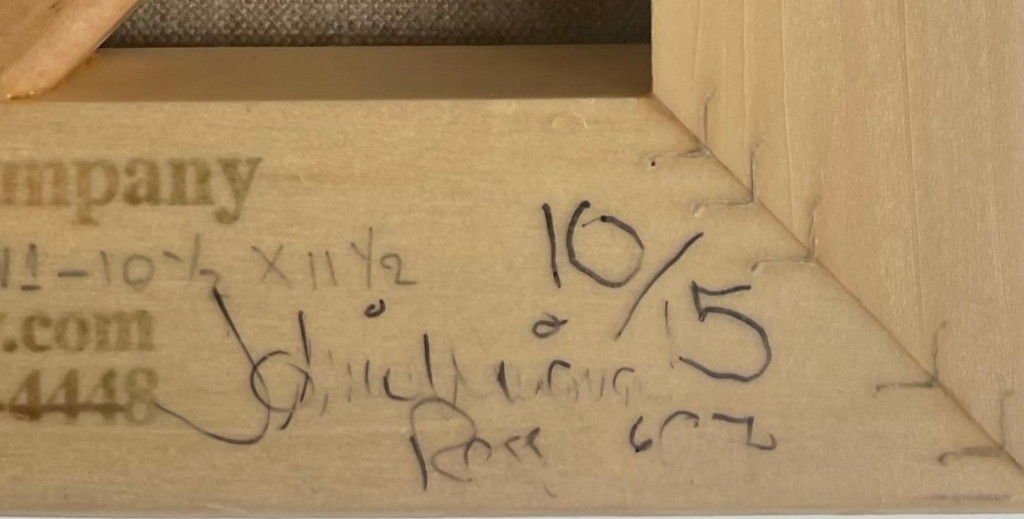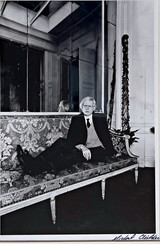
An Educated Collector is Our Best Client
In business for nearly two decades, we are a well established, popular contemporary art boutique specializing in expertly chosen, blue chip prints, multiples, uniques, books, ephemera and merchandise at different price points, with a focus on the secondary market. Please click on the "Contact Us" button at the bottom of this page for questions about any work, pricing and/or to arrange to visit our showroom/gallery - located in between Manhattan's Flatiron and Chelsea Flower Districts.
Description
Johnnie Winona Ross
Deep Creek Seeps 10, 2007
Oil paint on acrylic base burnished on Belgian linen
11.5 inches (vertical) x 10.5 inches (horizontal) x 1 inches
Signed twice, dated and titled on the verso; also bears the original Stephen Haller Gallery label
Signed twice, dated and titled on the verso; also bears the original Stephen Haller Gallery label.
This work was originally sold by the Stephen Haller Gallery which hosted several critically acclaimed, sell-out shows of New Mexico resident Johniie Winona Ross, whose exquisite Minimalist aesthetic really took hold with collectors. The debt to famous New Mexico resident and Minimalist goddess Agnes Martin is obvious, but Winona Ross has a disctinctive style and technique of his own. The process of creating this work was laborious: Ross typically applies as many as 90-100 layers of paint to each canvas, then scrapes the surface with a straight-edged razor to reveal the many layers (and their chronology), and finally burnishing the surface with a Pueblo pottery stone to achieve a soft gloss.
Maureen Mullarkey of Studio Matters wrote in 2010:
THE LOVELINESS OF JOHNNIE WINONA ROSS' paintings elude translation into either reproduction or verbal description. In 2011, ArtDaily published this announcement from Stephen Haller, publicizing a later exhibition:
"Washington Post critic Stephen Parks characterized Ross’s work in this way: “From a distance his canvases appear to be simple, minimal constructions of horizontal stripes with hints of vertical color in the background. Up close the paintings are seen to be extraordinarily beautiful and complex objects that induce a humming meditative state.”
Ross grounds his work in the inspiration of the desert of the American Southwest, and borrows techniques from ancient Native American sources, melding them with a distinctly sophisticated and utterly contemporary vision. His use of the Native American technique of burnishing pigment and minerals with a potter’s stone to create a hard surface with a visually warm sheen creates an effect reminiscent of the softening of marble steps by decades of use.
Curator Laura Addison, of the New Mexico Museum of Art, describes Ross’s “strategy of distilling a landscape to its immaterial elements” and goes on to state, “his paintings make visible the immaterial and the intangible, such as centeredness, rhythm, sound, heat, breeze.”
In his Foreword to the monograph Johnnie Winona Ross, Douglas Dreishpoon, Senior Curator of the AlbrightKnox Art Gallery, writes:
These paintings embody two worlds: one a realm of serene order; the other more unpredictable, a place prone to accident and surprise encounter. The balancing of divergent realms, fraught with tension, is a salient characteristic of this work, where temporal forces, like imaginary rivers glimpsed from the heavens, surge beneath plains of pure light.
Carter Ratcliff writes: “What gives his vision its character, finally, is the brilliance with which he integrates minutiae with overall structures…Ross’s art gives us an opportunity to feel an exhilarated engagement with the moment.”.."
Johnnie Winona Ross is inspired by the landscape of northern New Mexico, where he has lived and worked for the last twenty years. In 1999, following a long teaching career, he resigned his post as chair of the Art Department at The Maine College of Art in Portland, and moved to Taos. From his New Mexico studio he explores the vocabulary of minimalism and the complexity of rendering the experience of the high desert in pure abstraction. At first glance his paintings and works on paper appear to be largely absent of color, but looking more closely the layers upon layers of subtle earthen colors reveal themselves, knocked back by opaque washes of white. This interspersed layering of color, melding opacity and transparency, and building depth through repetition, are the integral elements of his work.
(Book not included).





















